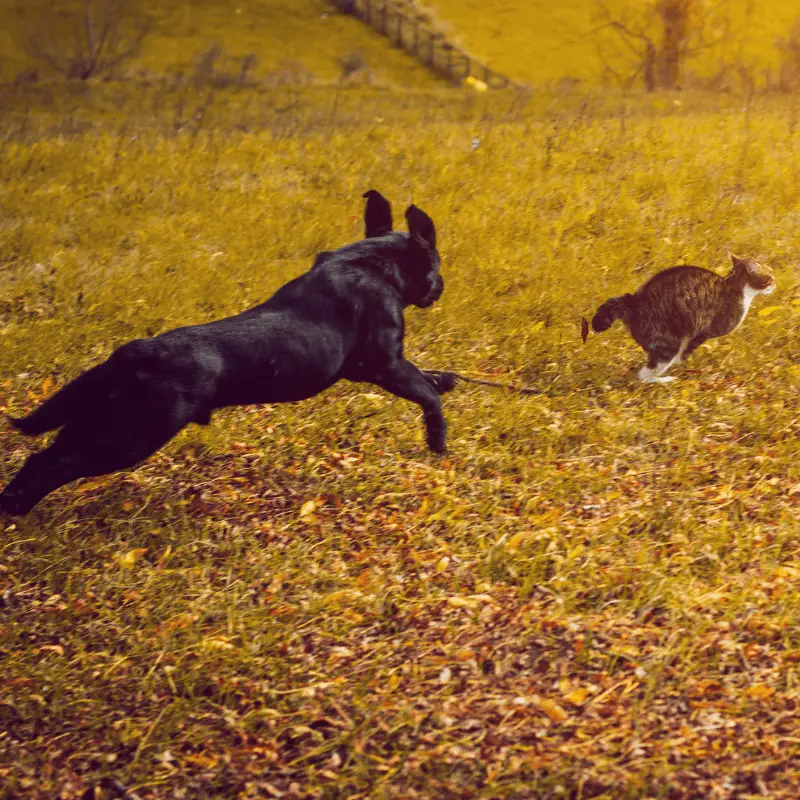There’s no doubt that dogs and humans have a unique relationship. Dogs have lived alongside humans for thousands of years.
Oxytocin is a hormone that plays a vital role in social bonding, reproduction, and childbirth. It is produced in the hypothalamus and released into the bloodstream. It is often referred to as the “love hormone” because it helps to create feelings of trust, bonding, and attachment between two individuals.
The release of oxytocin is not limited to humans; humans and dogs have evolved to produce this hormone together, forming a unique bond between the two species. Dogs are the only species of animal that share a hormonal bond with humans. Interactions such as petting, cuddling, or eye contact between humans and dogs trigger the release of oxytocin, strengthening their relationship.
Wild Versus Domesticated Animal Behavior: A Comparison
Wild animals and domesticated dogs have vastly different behaviours. Wild animals constantly look for predators, whereas your pet dog will happily ignore the danger of getting affection from a smiling human. A dog will respond positively if the human is kind to them.
Wild animals are those that live in their natural environment, while domesticated animals are those that have been bred and kept by humans.
Wild animals are typically more aggressive and territorial than domesticated animals. They are also more likely to flee or fight when threatened.
Wild animals have evolved to survive in their natural environment, making them more likely to be wary of humans and other unfamiliar creatures. They also tend to be more active and alert than domesticated animals, as they must constantly be on the lookout for predators.
On the other hand, domesticated animals have been bred to be more docile and trusting of humans. They are usually less aggressive and territorial than wild animals and significantly become attached to their human owners.
Domesticated animals are also less active than wild animals, as they do not need to be on the lookout for predators constantly. Another difference between wild and domestic animal behaviour is that wild animals tend to live in larger groups or herds. In contrast, domesticated animals are usually kept as individuals or small groups.

Advantages of Owning a Dog: Exploring the Numerous Benefits
- Improved physical health: Owning a dog can help you stay active and fit. Taking your dog for regular walks can help you get the exercise you need to stay healthy.
- Improved mental health: Owning a dog can help reduce stress and anxiety and can even help improve your mood. Spending time with your pet can help you relax and feel more positive.
- Companionship: Dogs are loyal companions who will always be there for you. They provide unconditional love and support, benefiting people who live alone or feel lonely.
- Security: Dogs can make excellent watchdogs and can help protect your home from intruders.
- Socialisation: Taking your dog out for walks or to the park can help you meet new people and make new friends.
Yes, having a dog can release oxytocin. Oxytocin is a hormone released when people interact with animals, including dogs. Oxytocin is known to promote feelings of love, trust, and bonding. Studies have shown that interacting with a dog can increase oxytocin levels in both the dog and the person.
You can increase your dog’s oxytocin levels by engaging in activities that promote bonding and trust. This includes spending quality time together, such as playing, cuddling, and walking. You can also give your dog treats and praise when they do something good. Additionally, providing your dog with plenty of mental stimulation, such as puzzle toys and training, can help to increase oxytocin levels.
Oxytocin is a naturally occurring hormone, so giving your dog oxytocin is unnecessary. However, if your dog is experiencing stress or anxiety, your veterinarian may recommend giving your dog a supplement containing oxytocin.
Yes, dogs can release oxytocin when they lick. Licking is a sign of affection and can help increase oxytocin levels in the dog and the person.
Conclusion
In conclusion, the love of a dog can be a powerful force for good in our lives. By releasing oxytocin, dogs can help us feel healthier, happier, and more productive. So if you’re feeling down, take some time to spend with your dog – whether it’s playing outside or cuddling up together.
References and Further Reading
- American Kennel Club – Do Our Dogs Really Love Us?
- National Library of Medicine – The Role of Oxytocin in the Dog–Owner Relationship
- Psychology Today – Dogs, Humans, and the Oxytocin-Mediated Strong Social Bond
- Science Daily – Smiling human faces are attractive to dogs, thanks to oxytocin.
- Frontiers in Psychology journal article on oxytocin and dogs













